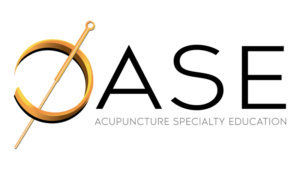If you are chasing pain and using only motor points, the chances are you are using motor points on the area of the body where the local pain is. When the pain doesn’t subside, you then add more and more motor point points in an attempt to find “the one” that will finally “take out the pain”. However, the pain still doesn’t get better. Or, the benefit is only temporary. This is because motor points do not treat pain in this way, and this is not how they should be used.
When we learn a new technique, we try to find the magic bullet and keep using it over and over. But you can’t do this with any technique and this includes motor points, which are one of the most misused techniques today. There is a very specific reason you use motor points. And it isn’t to quell pain. Not directly at least.
To really understand the use of motor points, you have to ask yourself one question: “Why is the pain there to begin with?”
Imbalances and dysfunctions in a given kinetic chain cause undue stress on particular areas of the body. When these occur, the body attempts to adapt, and usually does so quite well. But everything comes to an end, and when the body cannot adapt any longer, significant changes in the soft tissue and pain result. Areas commonly affected by these imbalances include postural muscles, the spine, and joints such as the knees and shoulders. Tears and conditions such as lateral epicondylitis can occur. Trigger points may develop in overloaded muscles. The list goes on and on. The big problem is that the resulting pain in these areas is where most practitioners go to treat – exclusively. They do this without ever treating the imbalances that caused the pain in the first place.
An ideal Orthopedic treatment consists of 2 parts: Part 1, correcting imbalances and dysfunction, and Part 2, treating the locally affected muscle, soft tissue, or joint from where the pain is coming from.
For part 1, you must find the inhibited muscles and needle the motor points. This will result in proper firing and functioning of the muscles and will bring balance back into the chain. It is important to note that the dysfunction and motor points needled are almost never in the area of pain.
For part 2, you go in and treat the locally affected tissues to relieve pain and speed up healing. Treatments can include electro-acupuncture, manual therapy, gua sha, and other techniques such as taping.
This is an incredibly effective way to treat, and the importance of part 1 cannot be underestimated. I first witnessed this through my introduction to EXSTORE. My father who was suffering from deep, radiating pain in his shoulder and arm which was getting worse over a 3-4 month period. The pain was achy, heavy, and debilitating. He could not use the arm due to the pain. X-rays showed bone spur at C5 vertebrae. Of course he thought he would need surgery.
Dr. Lombardi assessed him and found the serratous anterior was inhibited (forward flexion tested weak). He needled the motor point of the serratous anterior and restored the strength. Then he added about 2 minutes of soft tissue work on the serratous anterior as well. The symptoms reduced after that, and I repeated that treatment one more time a couple of days later. By then the pain was about 80% better. Over the next few weeks the symptoms completely abated, and he had full function of the arm. That was 5 years ago. Restoring function of the serratous anterior resulted in the entire shoulder and neck musculature functioning properly, and that allowed the body to function properly and heal. It didn’t matter that he had a bone spur. Such a diagnosis isn’t what we treat. We treat the dysfunction, which is the cause.
How do you find the inhibited muscles? And how do you know which patients will respond to motor point acupuncture? That is where the EXSTORE System comes in. EXSTORE is a very straightforward, simplified system that shows you what isn’t working, what to treat, and how to treat it. The system was designed to treat MSK and pain.
Come to an EXSTORE in-person seminar and you will see just how quickly you can learn this system, provide more thorough treatments, and get outstanding results.
The next live course is in Albany, NY April 14th-16th. Click here to learn more.
